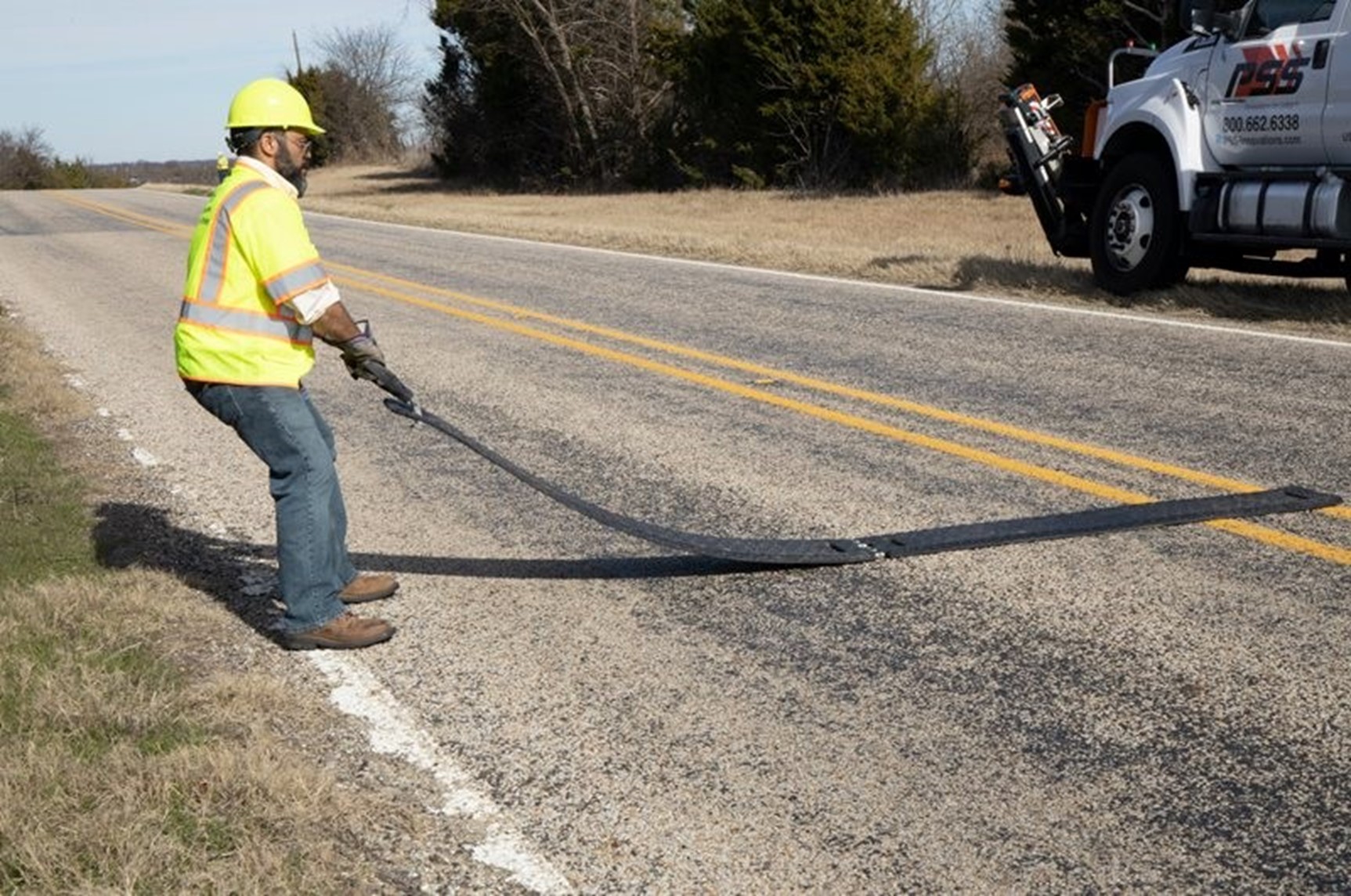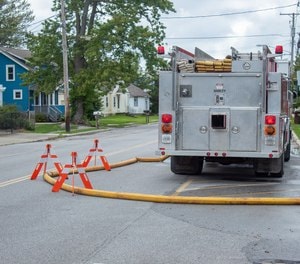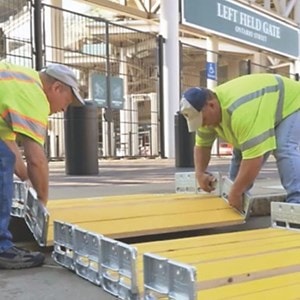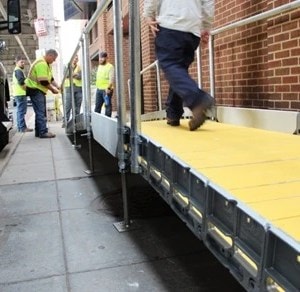REDUCING RISKS TO WORKER SAFETY IN WORK ZONES DUE TO DISTRACTED DRIVERS
Distracted driving in work zones is a significant safety concern for state departments of transportation.
Resources
Reducing Risks to Worker Safety in Work Zones Due to Distracted Drivers
Evaluation of Distracted Driving Countermeasures – Temporary Portable Rumble Strips
State departments of transportation (DOTs) are greatly concerned about the safety risks posed by distracted driving in work zones and have implemented various strategies to mitigate the risks. With the number of solutions available, the National Cooperative Highway Research Program (NCHRP) with the Transportation Research Board (TRB) set out to conduct a study to determine the effectiveness of different countermeasures in alerting distracted drivers about approaching work zones. The Temporary Portable Rumble Strip (TPRS) was one of the countermeasures tested during the study.
The Dangers of Distracted Driving
Many people overlook mind-wandering as a major factor in causing distracted driving crashes, despite it significantly contributing to such incidents. According to an analysis of data from the Fatal Analysis Reporting System (FARS), 61% of distracted drivers involved in fatal crash events reported being "generally distracted" or "lost in thought," also referred to as mind-wandering or highway hypnosis.
To address this issue, numerous efforts have been made to enhance driver attention and decrease speeds in work zones. Different methods, such as flags or flashing lights, have made advance warning signs more visible and attention-grabbing; however, preventable work zone crashes continue.
.png?lang=en-US&ext=.png)
The National Cooperative Highway Research Program
The TRB aims to lead transportation improvements and innovation by providing impartial and evidence-based information exchange, research and advice on all modes of transportation. Their activities involve around 8,000 transportation researchers, engineers, scientists and practitioners from various sectors who contribute their expertise in the public interest.
In NCHRP Research Report 1037: Reducing Risks to Worker Safety in Work Zones Due to Distracted Drivers, the report evaluates various temporary traffic control strategies to reduce worker safety risks due to distracted driving in work zones. The proposals were developed after considering the state-of-practice review and field evaluation of selected methods.
Transportation agencies and contractors who want to implement new technologies to enhance safety in work zones for both workers and drivers will find these proposals valuable.

Testing Temporary Traffic Control (TTC) Strategies
The research team first gathered information on mitigating distracted driving behaviors in work zones by reviewing available literature on seven countermeasures designed to reduce the risk of distracted drivers. Researchers continued their efforts by contacting state DOTs, highway construction and maintenance contractors to discover any practices or countermeasures being used to prevent distracted driving intrusions in work zones.
After their initial research, the team ultimately moved forward with only two countermeasures to test in real work zones: a “Watch for Workers When Flashing” warning sign and temporary portable rumble strips (TPRSs).
Transportation agencies and traffic control providers collaborated to identify the appropriate work zones to evaluate distracted driving behaviors before and after deploying the countermeasure. Afterward, the team began collecting data.
The effectiveness of the two counter measure strategies were determined by the visual attention exhibited by the drivers after passing a specific counter measure. (Signs or TPRS.)
Undistracted drivers were defined as those who were not talking on the phone and were looking forward. Distracted drivers were defined as those who looked in the rear-view mirror, out a side window, at a passenger, at their phone or down into their vehicle.
Temporary Portable Rumble Strips
How TPRSs Work
The purpose of the TPRS design is to increase road safety and prevent accidents in work zones and changing road conditions. It achieves this by offering drivers visual, audible, and tactile/haptic feedback as they drive over the strips. Therefore, even if the motorist is visually or cognitively distracted, the alert will capture their attention and bring them back to focus on the road. Without the need for glue or nails, installation and removal is quick, making them ideal for work zones requiring daily take down.
TPRSs in the Field
Data was collected in four different flagging operations along a rural two-lane road with and without the TPRSs deployed. Researchers worked together at each site to collect data on distracted driving. They recorded data near a "Road Work Ahead" sign and again right after the TPRS position. Then, they calculated the difference in distraction rates for each site.
In one location, when the researchers were collecting data without the TPRSs, they noticed that many distracted drivers were looking at a recreational facility located downstream. After the deployment of TPRSs, this behavior became less common almost immediately.
In general, the findings indicate that TPRSs were effective in reducing visual distractions at two of the sites. Additionally, the study findings suggest that TPRSs are a more effective solution for reducing distracted driving compared to the "Watch for Workers When Flashing" warning sign, as they demonstrated a consistently positive impact across multiple sites.
Protecting Workers From Distracted Drivers
By the end of the study, the researchers determined that the TPRS is a reasonable countermeasure for reducing driver distraction when approaching work zones and encourage both transportation agencies and contractors to consider adding them to their work zones. Currently, 63% of DOTs use TPRSs and 11% are currently testing their use.
The report further backs up their recommendation by referencing an additional study proving the impact of TPRSs in mitigating the risk of crashes caused by stopped traffic. Currently, end-of-queue warning systems are a prime example of innovative technology meant to notify drivers of the stop ahead. However, while effective in reducing the number of crashes, after introducing the TPRSs, crashes decreased by 53-60% during periods of queuing and congestion, compared to what would have been expected without their use. Moreover, the crashes that did occur were significantly less severe when the countermeasures were deployed, with only 16 percent of crashes involving injuries or fatalities, compared to 50 percent in the absence of the countermeasures.
Overall, the NCHRP Research Report 1037: Reducing Risks to Worker Safety in Work Zones Due to Distracted Drivers research emphasizes that TPRSs have a more consistent and positive impact in reducing distracted driving compared to other methods.
Read the full study here.
Related Articles
-
 The Traffic Safety Cone Has Been In Use For Decades – Here's How It Got Reinvented
The Traffic Safety Cone Has Been In Use For Decades – Here's How It Got Reinvented -
 4 Ways a Portable Pedestrian Ramp Makes the Community more Accessible
4 Ways a Portable Pedestrian Ramp Makes the Community more AccessibleEveryone wants a more accessible community. But the reality is that all communities have unique obstacles that create barriers for those who do not have the same mobility abilities as others. For exam...
-
 INNOVATIVE RAMP PROVIDES ACCESSIBILITY TO SIDEWALK OBSTRUCTION IN D.C. WORK ZONE
INNOVATIVE RAMP PROVIDES ACCESSIBILITY TO SIDEWALK OBSTRUCTION IN D.C. WORK ZONEA residential building in an area with heavy foot traffic needed maintenance, but the tools and machinery needed for the project created a tripping hazard. Closing the sidewalk was not an option so PS...